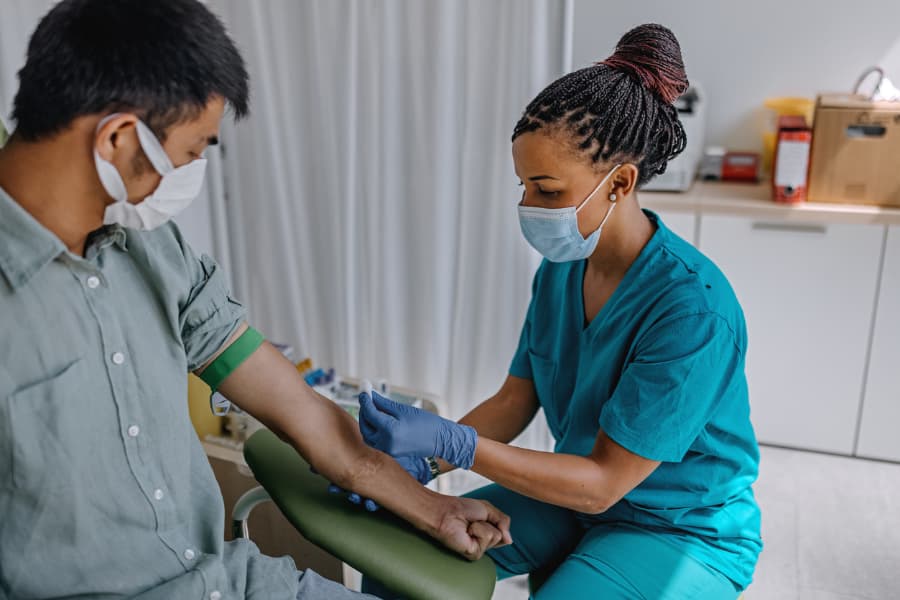Northeast Medical Institute - New Haven Campus Phlebotomy Course & Cna Class Things To Know Before You Buy
Northeast Medical Institute - New Haven Campus Phlebotomy Course & Cna Class Things To Know Before You Buy
Blog Article
The Single Strategy To Use For Northeast Medical Institute - New Haven Campus Phlebotomy Course & Cna Class
Table of ContentsSome Known Incorrect Statements About Northeast Medical Institute - New Haven Campus Phlebotomy Course & Cna Class Little Known Questions About Northeast Medical Institute - New Haven Campus Phlebotomy Course & Cna Class.The Best Strategy To Use For Northeast Medical Institute - New Haven Campus Phlebotomy Course & Cna Class9 Simple Techniques For Northeast Medical Institute - New Haven Campus Phlebotomy Course & Cna ClassThe Ultimate Guide To Northeast Medical Institute - New Haven Campus Phlebotomy Course & Cna ClassThe Only Guide to Northeast Medical Institute - New Haven Campus Phlebotomy Course & Cna Class
The use of such tools should be come with by other infection prevention and control practices, and training in their usage.For setups with reduced sources, cost is a motoring aspect in purchase of safety-engineered devices. Where safety-engineered devices are not available, competent use of a needle and syringe is appropriate.
labelling); transport problems; analysis of results for scientific management. In an outpatient division or center, supply a devoted phlebotomy cubicle containing: a tidy surface with 2 chairs (one for the phlebotomist and the other for the client); a hand laundry basin with soap, running water and paper towels; alcohol hand rub. In the blood-sampling room for an outpatient department or clinic, provide a comfortable reclining couch with an arm rest.
Some Known Details About Northeast Medical Institute - New Haven Campus Phlebotomy Course & Cna Class
Ensure that the indicators for blood tasting are clearly specified, either in a written procedure or in recorded instructions (e.g. in a lab kind). Collect all the devices required for the procedure and area it within safe and simple reach on a tray or trolley, guaranteeing that all the items are plainly visible.
Where the client is adult and aware, comply with the actions outlined below. Present on your own to the patient, and ask the person to specify their complete name. Check that the laboratory type matches the individual's identification (i.e. match the patient's information with the research laboratory type, to guarantee accurate recognition). Ask whether the patent has allergic reactions, anxieties or has actually ever before collapsed during previous injections or blood attracts.
Make the person comfy in a supine position (ideally). Area a tidy paper or towel under the person's arm. Talk about the examination to be carried out (see Annex F) and obtain spoken approval. The individual has a right to decline an examination any time prior to the blood tasting, so it is necessary to make sure that the person has understood the procedure.
Everything about Northeast Medical Institute - New Haven Campus Phlebotomy Course & Cna Class
Prolong the client's arm and inspect the antecubital fossa or forearm. Situate a blood vessel of a good dimension that shows up, straight and clear. The layout in Section 2.3, shows common positions of the vessels, however numerous variants are possible. The typical cubital blood vessel exists between muscles and is generally the most very easy to penetrate.
DO NOT insert the needle where blood vessels are diverting, because this boosts the opportunity of a haematoma. The vein ought to show up without using the tourniquet. Situating the vein will certainly assist in figuring out the right size of needle. Apply the tourniquet regarding 45 finger widths above the venepuncture website and re-examine the vein.
Haemolysis, contamination and visibility of intravenous liquid and medication can all modify the outcomes (39. Nursing personnel and medical professionals may access main venous lines for specimens complying with protocols. Nonetheless, samplings from central lines bring a danger of contamination or wrong research laboratory test results (https://northeastmed.edublogs.org/2024/06/29/northeast-medical-institute-new-haven-campus-phlebotomy-course-cna-class/). It is appropriate, yet not excellent, to injure specimens when first introducing an in-dwelling venous gadget, before attaching the cannula to the intravenous fluids.
Getting My Northeast Medical Institute - New Haven Campus Phlebotomy Course & Cna Class To Work
Allow the area to dry. Failure to permit enough get in touch with time raises the threat of contamination. DO NOT touch the cleaned site; particularly, DO NOT put a finger over the blood vessel to guide the shaft of the exposed needle. It the site is touched, repeat the sanitation. Perform venepuncture as complies with.
Ask the person to develop a clenched fist so the veins are extra prominent. Go into the blood vessel promptly at a 30 degree angle or much less, and continue to introduce the needle along the vein at the most convenient angle of entry - Phlebotomy Courses. When adequate blood has been gathered, release the tourniquet BEFORE withdrawing the needle
Northeast Medical Institute - New Haven Campus Phlebotomy Course & Cna Class Things To Know Before You Get This
Withdraw the needle gently and use gentle stress to the site with a tidy gauze or dry cotton-wool round. Ask the client to hold the gauze or cotton woollen in position, with the arm prolonged and increased. Ask the individual NOT to bend the arm, here are the findings since doing so causes a haematoma.

Some Known Questions About Northeast Medical Institute - New Haven Campus Phlebotomy Course & Cna Class.
Do not press the syringe bettor due to the fact that additional pressure enhances the danger of haemolysis. Where feasible, maintain televisions in a shelf and relocate the shelf towards you. Inject downwards into the proper coloured stopper. DO NOT eliminate the stopper since it will certainly launch the vacuum cleaner. If the example tube does not have a rubber stopper, infuse exceptionally slowly into the tube as minimizing the stress and rate used to move the sampling minimizes the danger of haemolysis.

Report this page